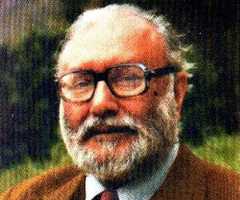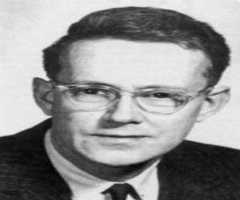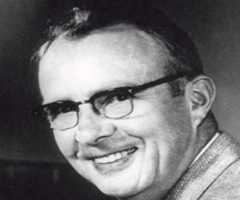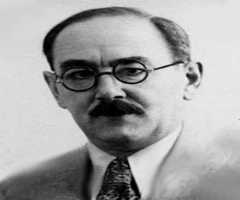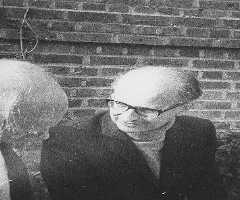Eugene Wigner Biography, Life, Interesting Facts

Birthday :
Died On :
Also Known For :
Birth Place :
Zodiac Sign :
Eugene Wigner was born on November 17, 1902, in Budapest, Austria-Hungary (currently Hungary). His parents were Elizabeth (Einhorn) and Anthony Wigner. Eugene Wigner also had two sisters: Bertha and Margit.
Education
Until Eugene Wigner was nine years old, he was homeschooled by his parents. Once he attended school, he went to the Fasori Evangelikus Gimnazium. Since his family was Jewish, he also took several Jewish studies classes in addition to his secular classes. However, his parents later converted to Christianity, and he stopped taking the classes. It was also around this time that Wigner considered himself to be an atheist.
In 1920, Eugene Wigner graduated from his secondary education and began to attend the Budapest University of Technical Science. However, in 1921, Eugene Wigner transferred to the Technical University of Berlin (Technische Hochschule Berlin). Here, Eugene Wigner studied several kinds of physics.
Career
After graduating from college, Eugene Wigner began working as an assistant at the Kaiser Wilhelm Institute. At the same time, Eugene Wigner was also working at the University of Gottingen as an assistant. While working at these places, he helped to come up with both group theory (a way to study algebraic structure groups) and the symmetry in physics theory (a theory that a feature of a system doesn’t change under another transformation). Eugene Wigner also wrote some mathematical equations during his time as an assistant.
In 1930, Eugene Wigner moved to the United States so he could work at Princeton University. Here, he continued his research, much of which was in math and quantum and nuclear physics. Eugene Wigner continued his research here until around the beginning of the United State’s involvement in World War II.
In 1942, Eugene Wigner began working for the United States of Government on the Manhattan Project. This was the project in which thousands of scientists from all over the world worked together to create the two atom bombs that the United States dropped on Hiroshima and Nagasaki in Japan. Part of the reason why Wigner agreed to work on this project was because Eugene Wigner thought the United States would be more responsible with nuclear weapons than the Nazis would be. The last thing he wanted was for Nazi Germany to create nuclear weapons before anyone else could have a chance to make their own and stop them. He worked on this project until 1945.
In 1946, Eugene Wigner became the Director of Research and Development a the Clinton Laboratory. However, he was not here for long before Eugene Wigner quit this post (as it was too stressful) and returned to working at Princeton. In the next year, Eugene Wigner began working for the National Bureau of Standards, w post which he held until 1951.
In 1951, Eugene Wigner joined the National Research Council, which he stayed on until 1954. In 1952 Eugene Wigner joined both the National Science Foundation and the Atomic Energy Commission, which Eugene Wigner stayed on (with both) until 1957. Eugene Wigner later rejoined [the Atomic Energy Commission] 1959 until 1964. While working in these various groups, Eugene Wigner also continued his research.
Publications
All of Wigner’s books and essays were either mathematical, scientific or works that consisted of both mathematics and science. Some of his most famous works are listed below.
The Unreasonable Effectiveness of Mathematics in Natural Sciences
Symmetries and Reflections
Group Theory and its Application to the Quantum Mechanics of Atomic Spectra
Physical Theory of Neutron Chain Reactors (written with Alvin Weinberg)
Awards And Accomplishments
Franklin Medal (1950)
Atoms for Peace Award (1959)
Nobel Prize in Physics (shared with Maria Goeppert Mayer and Hans Jensen) (1963)
National Medal of Science (1969)
Albert Einstein Award (1972)
Wigner Medal (1978)
Family Life
Eugene Wigner was first married in 1936 to Amelia Frank. Sadly, she died a year later. He then married Mary Wheeler in 1941. Together, the couple had two children: David and Martha. Sadly, she died in 1977. He then married Eileen Clare-Patton Hamilton. Together, this couple had one child: Erika. The marriage ended in 1995 with Wigner’s death.
Death
Eugene Wigner died on January 1, 1995, in Princeton, New Jersey, USA. The cause of his death was pneumonia. He was 92 years old when he passed away.
Legacy
Various buildings are named for Eugene Wigner, awards are named after him, as are a third of a dozen mathematics functions, and dozens of physics equations and discoveries. Some of the things named after him are listed below.
Wigner-Eckart Theorem
Wigner’s Theorem
Winger Effect
Wigner Distribution Function
Wigner Research Centre for Physics (Budapest, Hungary)
Eugene P. Wigner Reactor Physicist Award (American Nuclear Society)
Eugene P. Wigner Auditorium (Oak Ridge National Laboratory)
More Physicists
-
![William Alfred Fowler]()
William Alfred Fowler
-
![Joseph Rotblat]()
Joseph Rotblat
-
![Edward Mills Purcell]()
Edward Mills Purcell
-
![Charles Thomson Rees Wilson]()
Charles Thomson Rees Wilson
-
![Luis Walter Alvarez]()
Luis Walter Alvarez
-
![Albert Abraham Michelson]()
Albert Abraham Michelson
